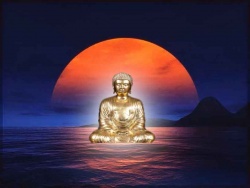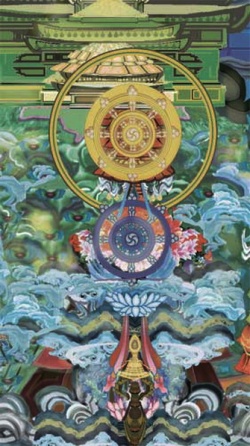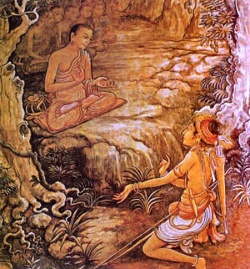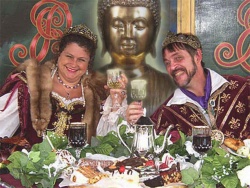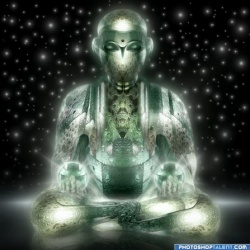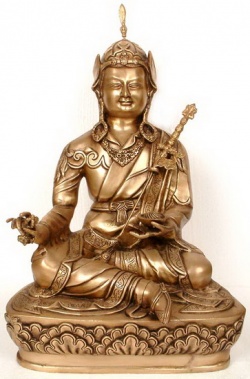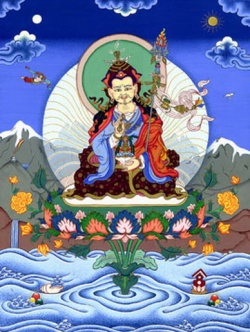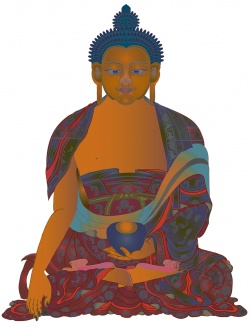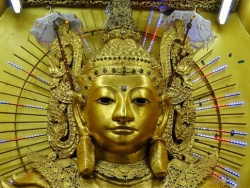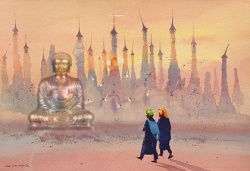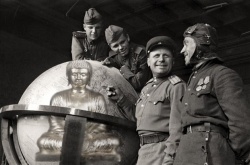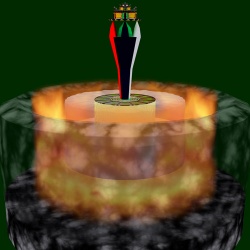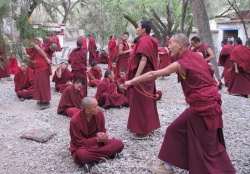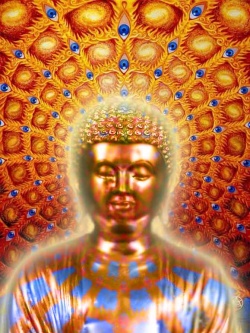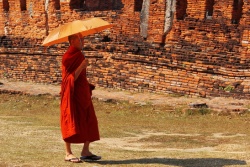Bodhicari Precepts by Bodhicarini Upasika Jayasili
Bodhicaris can be defined as “practitioners of the Buddha Dhamma who have attainment of enlightenment as their goal”. In Pali, the feminine form is Bodhicarini.
The Bodhicari Precepts are an expansion of Ajivatthamaka Sila (Eight Precepts with Right Livelihood as the Eighth) and Panca Sila (The Five Precepts).
The Bodhicari Precepts are discussed in “The Value of Precepts”, Bodhicari Vajira, Sakyadhita: International Association of Buddhist Women Newsletter, Volume 4 (1) (Summer 1993), pages 11-12.
1) Panatipata veramani sikkhapadam samadiyami
I undertake the Precept to refrain from killing and injuring living things
2) Adinnadana veramani sikkhapadam samadiyami
I undertake the Precept to refrain from taking that which is not given
3) Kamesu micchacara veramani sikkhapadam samadiyami
I undertake the Precept to refrain from sexual misconduct and excessive sensuality
4) Musavada veramani sikkhapadam samadiyami
I undertake the Precept to refrain from false and harmful speech
5) Pisuna vaca veramani sikkhapadam samadiyami
I undertake the Precept to refrain from backbiting
6) Pharusa vaca veramani sikkhapadam samadiyami
I undertake the Precept to refrain from using harsh or abusive speech
7) Samphappalapa veramani sikkhapadam samadiyami
I undertake the Precept to refrain from useless or meaningless conversation
8) Sura – meraya – majja pamadatthana veramani sikkhapadam samadiyami
I undertake the Precept to refrain from drink and drugs which fuddle the mind and reduce mindfulness
9) Micchajiva veramani sikkhapadam samadiyami
I undertake the Precept to refrain from wrong means of livelihood
10) Sabba sattesu metta sahagatena cetasa viharana sikkhapadam samadiyami
I undertake the Precept to live every moment with loving-kindness to all living beings
I undertake the Precept not to revile the Three Treasures [the Buddha, Dhamma and Sangha] but to cherish and uphold them
12) Karunopaya kosalla pariggahitanam dasaparaminam paripurana sikkhapadam samadiyami
I undertake the Precept to practise the Ten Perfections with compassion and skill
Imani dvadasa sikkhapadam samadiyami
I undertake these twelve Precepts with full sincerity
Dharma Vijaya Buddhist Vihara Los Angeles USA
Under the leadership of the late Venerable Havnapola Ratnasara Maha Thera and Venerable Walpola Piyananda Maha Thera the Dhama Vijaya Buddhist Vihara were pioneers in the development the use of Precepts for Upasakas and Upasikas in the West. Their Dhammacari and Bodhicari Precepts are an expansion of the Ajivatthamaka Sila (Eight Precepts with Right Livelihood as the Eighth).
“In time it occurred to Bhante Venerable Walpola Piyananda] that the best way to establish Buddhism here [the USA] with native teachers was to develop a new system to supplement, not replace, the traditional system… In consultation with Ven Dr. Havnapola Ratanasara and Ven. Lenagala Sumedha Ananda Maha Nayaka and the support of Ven. Madewala Punnaji Ven. Piyananda and Ven. [Pannile] Ananda were able to develop a three-step system of ordination. First, anyone who takes five precepts and is initiated into Buddhism is called an Upasaka [Upasika]. He or she is expected to follow a specific study program and practice meditation. After practising for two years and showing development, he or she can advance to the level of Dhammacari. The Dhammacari follows 9 precepts, and follows a more advance syllabus of study. He or she is qualified to teach Sunday school and start meditation classes, but is not considered a fully ordained minister. The Dhammacari is basically a lay religious teacher. Finally, after a few more years of study and practice, those so inclined can apply for the level of Bodhicari who follows 12 precepts. He or she is a fully ordained lay minister, on the level of, say, a Japanese Jodo Shinshu or a Methodist minister. He or she can perform many religious ceremonies and activities, yet remains a lay person. Dharma Vijaya also has a Brahmacari initiation for those so inclined.”
Dharma Vijaya Buddhist Vihara Silver Jubilee 1980-2005: Golden Jubilee of Ordination of Bhante Walpola Piyananda 1955-2005, (Dharma Vijaya: Triannual Publication of Dharma Vijaya Buddhist Vihara, Los Angeles), (Anniversary Issue, October, 2005).
Experimentation with Intermediate Religious Statuses
“Traditional Theravada Buddhism stresses the distinction between lay and monastic lifestyles. Even so, the tradition offers specific opportunities for lay Buddhists to approximate the renunciatory monastic ideal on a limited basis. Lay devotees may take the Eight Precepts (attanga sila) during uposatha (sacred) days, wearing white and living in a disciplined and reflective manner at the temple…Various Buddhist groups in the West have implemented novel hierarchies of graduated religious statuses for their members…
For more than a decade Dharma Vijaya Buddhist Vihara of Los Angeles has experimented with such categories. In part to provide initiation ceremonies for American converts to Buddhism, but more importantly in an effort to train an indigenous American leadership in lieu of cultivating a native bhikkhu-sangha. “Buddhism can hardly occupy a firm place in the mainstream of American society if it constantly has to be replenished with foreign born clergy who themselves may not be integrated into our society,” asserts Dharma Vijaya’s pamphlet describing its most recent hierarchy of lay statuses.
Taken as a whole, Dharma Vijaya’s five categories represent intermediate religious statuses between the ordinary layperson and the bhikkhu which creates something of a para- or quasi-monastic order …At the first level, Upasaka, a person makes “a commitment to approach life from a Buddhist point of view.” The Upasaka receives an ivory-coloured sash at an initiation ceremony, promising to live by the Five Precepts and to recite some basic Buddhist verses twice daily.
The special nature of the at least one year of study and practice, at least eighteen years of age (or parental and temple monks’ approval) - set this apart from the traditional status of Buddhist lay devotee (upasaka/upasika). A Dhammacari, the next status, must be an Upasaka of at least two years’ practice and deemed “suitable” by the monks of the temple.
“A Dhammacari is a committed practising Buddhist, at least 18 years of age, who has the knowledge and experience to teach Dhamma School, give Dhamma talks, conduct meditation classes, and even organize Buddhist groups.” The candidate receives a light yellow sash at an initiation ceremony, pledging to adhere to nine precepts in life - the standard Five Precepts plus abstention from “tale-bearing,” “harsh speech,” idle chatter,” and “wrong livelihood” - and to practice a twice-daily recitation ritual.
Dharma Vijaya considers the third status in its hierarchy to be on the same level as the Dhammacari, though it reflects one difference in lifestyle.” The Anagarika is a Dhammacari, who substitutes the more stringent precept of abstention from all sexual relations (abrahmacariya) for the usual precept of abstention from simple sexual misconduct (kamesu micchacara).”
Paul David Numrich “Theravada Buddhism in America: Prospects for the Sangha” Chapter 8, Prebish, Charles S and Tanaka, Kenneth, K. The Faces of Buddhism in America. (Berkeley, University of California Press, 1998) (0-520-20460-3) Pages 158-159.
Available online at Google Books http://books.google.com
Numrich further comments: “With the institution of the… Bodhicari, Dharma Vijaya has sought to fill the “gap” in the Western transmission of Theravada Buddhism created by the dearth of monks. “A Bodhicari is a Buddhist lay minister, neither a lay person nor ordained Sangha,” whose responsibilities and authorities… include… the possibility of conducting certain religious services [when monks are unavailable], holding chaplainships, conducting weddings and funerals, [and] initiating Upasaka.” … Nomination requirements include a minimum of four years of college and three years of training with a monk… the Bodhicari follows twelve precepts, the twelfth being the most important in emphasizing the selfless service exemplified by the Buddha in his previous lives as bodhisattva or Buddha-to-be: “I undertake the Precept to practise the Ten Perfections with compassion and skill”. The Bodhicari also holds to a detailed daily ritual regimen. The final special status granted by Dharma Vijaya is Brahmacari, a Bodhicari who abstains from all sexual relations (abramacariya)… The temple has ordained a total of four Bodhicaris including the former samaneri Reverend Dhamamitta [a Thai woman]”
Paul David Numrich “Theravada Buddhism in America: Prospects for the Sangha” Chapter 8, Prebish, Charles S and Tanaka, Kenneth, K. The Faces of Buddhism in America. (Berkeley, University of California Press, 1998) (0-520-20460-3) Pages 159-160.
Paul David Numrich reports that an American laywoman received the Panca Sila (Five Precepts) from Venerable Ananda Maitreya in 1986 at Dharma Vijaya Buddhist Vihara Los Angeles. She was one of the first two people to take the Bodhicari Precepts and received the Buddhist name Vajira at the same Vihara in 1991.
Numrich, Paul David. Old Wisdom in the New World: Americanization in Two Immigrant Theravada Buddhist Temples. (Knoxville Tennessee, The University of Tennessee Press, 1996) (0-87049-905-X) page 114.
NIBWA Newsletter on International Buddhist Womens Affairs (Number 34) explained that Venerable Balangoda Ananda Maitreya was in Sri Lanka at this time, and gave his approval from there. She has since joined the Buddhist Sangha Council of Southern California (under the title of “Reverend”), and she serves as the Buddhist Chaplain at UCLA.
"Letter from our Reader", NIBWA Newsletter (Newsletter on International Buddhist Womens Affairs), 34 (January-March, 1993), 19-20.
Professor Paul Numrich attended the Wesak ceremony in 1991 when the first Bodhicaris took these Bodhicari Precepts. Three Upasakas also took five Precepts and two Dhammacaris took Nine Precepts. The Nine Dhammacari Precepts are an amalgamation of the Panca Sila (The Five Precepts) and the Ajivatthamaka Sila (Eight Precepts with Right Livelihood as the Eighth). Numrich explains:
“The twelve Bodhicari Precepts include … two borrowed Pali phrases and one Precept composed by Venerable Piyananda himself. The borrowed Pali, with translation and sources according to Venerable Piyananda, are (1) Sabba sattesu metta sahagatena cetasa viharana sikkhapadam samadiyami ‘I undertake the Precept to live every moment with loving-kindness to all living beings’ (from Nava Uposatha Sila [the Nine Uposatha Sila with loving-kindness as the Ninth]); and (2) Karunopaya kosalla pariggahitanam dasaparaminam paripurana sikkhapadam samadiyami, ‘I undertake the Precept to practise the Ten Perfections with compassion and skill’ (from Buddhagosa’s commentary on the Jataka). Venerable Piyananda’s original Precept was; Yavajivam aham ratanattayam na niggahissami tatheva tam samadarenagarukaram karissamiti sikkhapadam samadiyami, I undertake the Precept not to revile the Three Treasures [the Buddha, Dhamma and Sangha] but to cherish and uphold them’.”
Numrich, Paul David. Old Wisdom in the New World: Americanization in Two Immigrant Theravada Buddhist Temples. (Knoxville Tennessee, The University of Tennessee Press, 1996) (0-87049-905-X) page 130.
By 2005 Dharma Vijaya Buddhist Vihara reported that there are eleven Bodhicaris at Dharma Vijaya over half of whom were women.
The Asian Tribune: A Newspaper Published by World Institute for Asian Studies reported on the 2009 Wesak celebrations at Dharma Vijaya. It explained “We must mention that the highlight of the Vesak program was the acceptance of Buddhism by eight candidates who had studied the doctrine under the guidance of the venerable monks. They were recognized in three categories; 1 Upasaka/Upasika 2. Dhammacari 3. Bodhicari. This initiation ceremony which originated at Dharma Vijaya Buddhist Vihara is an ongoing program where the recipients are expected to adhere to a certain code of ethics and also disseminate the Dhamma by being examples of the Buddha’s teachings.”
“Wesak Celebrations at Dharma Vijaya Buddhist Vihara”,
The Asian Tribune: A Newspaper Published by World Institute for Asian Studies (Volume 9, No 184, 16th May 2009)
Available online at www.asiantribune.com/
Available online at http://www.asiantribune.com/?q=node/17571
Sakyadhita (International Association of Buddhist Women) demonstrated interest in the Bodhicari Precepts. Bodhicari Vajira described The Bodhicari Precepts in Volume 4 (1) (Summer, 1993) issue of Sakyadhita Newsletter as follows: “Just two years ago, on Vesak in 1991, a new ministerial ordination was developed by Dharma Vijaya Buddhist Vihara in Los Angeles… the ministerial ordination of “Bodhicari”… as a paradigm to be used by other temple congregations in America and abroad. So far monks, nuns, laypeople, and scholars around the world have expressed great interest in this new ordination. The general response has been overwhelmingly positive.” The paper issue of the Sakyadhita Newsletter included a beautiful illustrated version of the Bodhicari Precepts..
“The Value of Precepts”, Bodhicari Vajira, Sakyadhita: International Association of Buddhist Women Newsletter, Volume 4 (1) (Summer 1993), pages 11-12.
'Venerable Balangoda Ananda Maitreya Mahanayaka Thera Aggamaha Pandita Abhidhaja Maharatthaguru DLitt DLitt (24th August 1896 -18th July 1998)
Venerable Balangoda Ananda Maitreya Mahanayaka Thera Aggamaha Pandita Abhidhaja Maharatthaguru DLitt DLitt (24th August 1896 -18th July 1998) is the person who did the most to support and encourage these developments. He took part in the BBC TV series The Long Search, and regularly visited the West.
He wrote “The perfect moral conduct or character can be categorised under the Eight Precepts called Ajivatthamaka Sila. These are refraining from eight unwholesome ways, namely, killing, taking what is not given; a life devoted to sensuality; falsehood, slandering, backbiting, harsh speech, gossip; and wrong livelihood. All the good conduct and keeping Precepts or Patimokkha rules of Buddhist monks are included in these eight Precepts.”
Balangoda Ananda Maitreya Mahanayaka Thera, Venerable, Nine Special Qualities of the Buddha & Other Essays. (London, World Buddhist Foundation, 1995) page 16.
Paul David Numrich reports that an American laywoman received the Panca Sila (Five Precepts) from Venerable Ananda Maitreya in 1986 at Dharma Vijaya Buddhist Vihara Los Angeles. She was one of the first two people to take the Bodhicari Precepts and received the Buddhist name Vajira at the same Vihara in 1991.
Numrich, Paul David. Old Wisdom in the New World: Americanization in Two Immigrant Theravada Buddhist Temples. (Knoxville Tennessee, The University of Tennessee Press, 1996) (0-87049-905-X) page 114.
NIBWA Newsletter on International Buddhist Womens Affairs (Number 34) explained that Venerable Balangoda Ananda Maitreya was in Sri Lanka at this time, and gave his approval from there. She has since joined the Buddhist Sangha Council of Southern California (under the title of “Reverend”), and she serves as the Buddhist Chaplain at UCLA.
"Letter from our Reader", NIBWA Newsletter (Newsletter on International Buddhist Womens Affairs), 34 (January-March, 1993), 19-20.
Venerable Narada Maha Thera gave Jacquetta Gomes the Buddhist name Jayasili when she became an Upasika by taking Panca Sila (Five Precepts) in Sri Lanka on 31st July 1975. Venerable Balangoda Ananda Maitreya was the Preceptor when she took the Bodhicari Precepts at the London Buddhist Vihara on 3rd August 1994).
Newsround”, The Middle Way: Journal of The Buddhist Society, 69 (3) (November, 1994), pages 207-208.
Available online at http://www.thebuddhistsociety.org/
Venerable Pidiville Piyatissa (born in Sri Lanka) head of Ketumati Buddhist Vihara Manchester led a retreat for BGKT Buddhist Group of Kendal (Theravada) at Kendal Fire Station community room over the weekend of 24th and 25th September 2011. As far as we are aware this the first retreat led by a Buddhist Monk to take place in a Fire Station in the UK. Venerable Piyatissa presented Bodhicarini Upasika Jayasili with a Bodhicari sash which is the same as the sashes worn by Bodhicaris in the USA. She took the Bodhicari Precepts with Venerable Balangoda Ananda Maitreya Mahanayaka Thera Abhidhaja Maharatthaguru Aggamaha Pandita DLitt DLitt (1896-1998) as Preceptor, in 1994 at the London Buddhist Vihara. She was the first person to take these Precepts outside the USA. As far as we are aware this is the first time such a presentation has taken place outside the USA. Her elderly Father worked for the London Fire Brigade and is delighted that this took place in a Fire Station.
Further information is available on the Buddhist Group of Kendal (Theravada) website
http://buddhistgroupofkendal.co.uk/
BIBLIOGRAPHY
Websites
BGKT Buddhist Group of Kendal (Theravada)
http://buddhistgroupofkendal.co.uk/ http://buddhistgroupofkendal.co.uk/bodhicari-precepts/
Dharma Vijaya Buddhist Vihara, Los Angeles
Sakyadhita International Association of Buddhist Women
Articles
“Buddhist Precepts and Lay Dhamma Teaching in the West”, Jacquetta Gomes, Yasodhara Newsletter on International Buddhist Women’s Activities, (October-December, 2008), 25(1) No 97, 15-17. (ISSN 0875-1996)
“Buddhist Precepts and Lay Dhamma Teaching in the West”, Jacquetta Gomes, Lotus: the Lay Review and Newsletter of the Birmingham Buddhist Vihara, Issue 31 (Spring, 2010) 4-6.
Available online at http://www.bbvt.org.uk/
http://www.bbvt.org.uk/lotus_arch/Lotus_31.pdf
“The development and use of the Eight Precepts for lay practitioners, Upasakas and Upasikas in Theravada Buddhism in the West”, Jacquetta Gomes, Contemporary Buddhism, Volume 5(1) (May, 2004) 47-63 (ISSN 1463-9947)
Available online at www.wlu.ca/documents/6478/The_development.pdf
Available online at http://www.tandfonline.com/
“A Select Guide to Indological Periodical Literature: Buddhism: Gomes, Jacquetta -The development and use of the Eight Precepts for lay practitioners, Upasakas and Upasikas in Theravada Buddhism in the West”, Contemporary Buddhism, Volume 5(1) (May, 2004)”, MLBD [[[Wikipedia:Motilal Banarsidass|Motilal Banarsidass]]] Newsletter: A Monthly Indological Bibliography English & Hindi, 27(6) (June, 2005), 15. (ISSN 0970-1535).
Available online at www.mlbd.com/
http://www.mlbd.com/Admin/NewsLetter/MLBDNewsletter.pdf
"A Female Ordained Lay Buddhist Minister", NIBWA Newsletter (Newsletter on International Buddhist Womens Affairs), 33 (October-December, 1992), 11-12.
“Investigating the Integration of Buddhism into Western Culture”, Venerable Walpola Piyananda, Asian Tribune: A Newspaper Published by World Institute for Asian Studies (Volume 11 No 618, 4th November 2012)
Available online at www.asiantribune.com/
Available online at http://www.asiantribune.com/news/2012/11/03/investigating-integration-buddhism-western-culture
"Letter from our Reader", NIBWA Newsletter (Newsletter on International Buddhist Womens Affairs), 34 (January-March, 1993), 19-20.
“Newsround”, The Middle Way: Journal of The Buddhist Society, 69 (3) (November, 1994), pages 207-208.
Available online at http://www.thebuddhistsociety.org/
http://www.thebuddhistsociety.org/page/library/the-middle-way-2
“The Value of Precepts”, Bodhicari Vajira, Sakyadhita: International Association of Buddhist Women Newsletter, Volume 4 (1) (Summer 1993), pages 11-12.
Available on-line at www.sakyadhita.org
http://sakyadhita.org/docs/resources/newsletters/4-1-1993.pdf
“Wesak Celebrations at Dharma Vijaya Buddhist Vihara”,
The Asian Tribune: A Newspaper Published by World Institute for Asian Studies (Volume 9, No 184, 16th May 2009)
Available online at www.asiantribune.com/
Available online at http://www.asiantribune.com/?q=node/17571
Journals
Dharma Vijaya Buddhist Vihara Silver Jubilee 1980-2005: Golden Jubilee of Ordination of Bhante Walpola Piyananda 1955-2005, (Dharma Vijaya: Triannual Publication of Dharma Vijaya Buddhist Vihara, Los Angeles), (Anniversary Issue, October, 2005).
Available online at www.dharmavijaya.org
http://www.dharmavijaya.org/Downloadable_files/Full_magazine.pdf
Buddhist Ministry in the West, (Dharma Vijaya: Triannual Publication of Dharma Vijaya Buddhist Vihara, Los Angeles) (Kathina Issue, October, 1994), Volume 6 (1).
Balangoda Ananda Maitreya, Venerable, and Jayasili (Jacquetta Gomes), Introducing Buddhism (Taipei, Taiwan, The Corporate Body of the Buddha Educational Foundation, 2007) (Book code EN074) (This includes the booklet: Requirements and Ceremonies for the Five Precepts (Panca Sila), The Eight Precepts with Right Livelihood as the Eighth (Ajivatthamaka Sila), Dhamma Teachers Certificate, issued by the Buddhist Group of Kendal (Theravada) and Ketumati Buddhist Vihara at Wesak 2006)
Available online at www.budaedu.org
http://ftp.budaedu.org/ebooks/pdf/EN074.pdf
Available online at Google Books http://books.google.com
Balangoda Ananda Maitreya Mahanayaka Thera, Venerable, Nine Special Qualities of the Buddha & Other Essays. (London, World Buddhist Foundation, 1995)
Numrich, Paul David. Old Wisdom in the New World: Americanization in Two Immigrant Theravada Buddhist Temples. (Knoxville Tennessee, The University of Tennessee Press, 1996) (0-87049-905-X)
Available online at Google Books http://books.google.com
Prebish, Charles S and Tanaka, Kenneth, K. The Faces of Buddhism in America. (Berkeley, University of California Press, 1998) (0-520-20460-3)
Available online at Google Books http://books.google.com
Requirements and Ceremonies for the Five Precepts (Panca Sila), The Eight Precepts with Right Livelihood as the Eighth (Ajivatthamaka Sila), Dhamma Teachers Certificate, issued by the Buddhist Group of Kendal (Theravada) and Ketumati Buddhist Vihara at Wesak 2006).
Available online at Google Books http://books.google.com
Available as the Appendix to Introducing Buddhism at www.budaedu.org
http://ftp.budaedu.org/ebooks/pdf/EN074.pdf
Bibliography
See the webpages on the BGKT Buddhist Group of Kendal (Theravada) website
http://buddhistgroupofkendal.co.uk/
Ajivatthamaka Sila (Eight Precepts with Right Livelihood as the Eighth) Bibliography
Buddhist Precepts Bibliography
http://buddhistgroupofkendal.co.uk/buddhist-precepts-bibliography/
Source
By Bodhicarini Upasika Jayasili
Updated 11th August 2015

